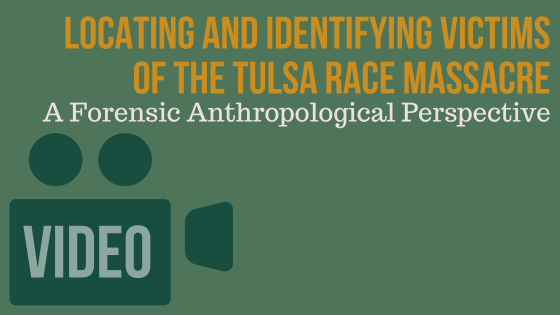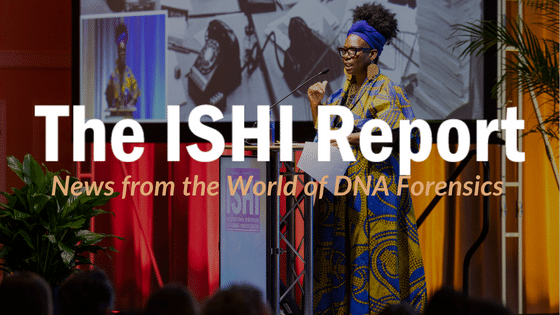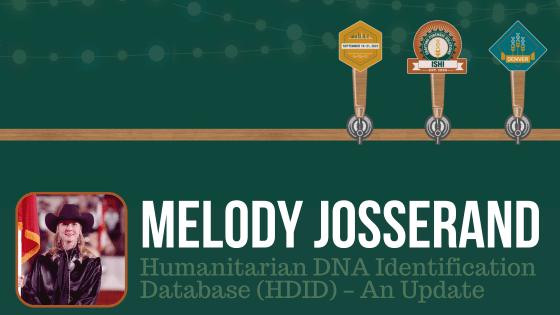Previewing the Posters of our ISHI Student Ambassadors: Cassandra Skrant

Monozygotic twins are difficult to differentiate in a forensic laboratory because they come from the same zygote. This causes the standard STR typing method used within forensic laboratories to be unable to distinguish monozygotic twins. Cassandra’s research assessed the usefulness of pyrosequencing CpG sites to determine if DNA methylation can be used to discriminate monozygotic […]
Locating and Identifying Victims of the Tulsa Race Massacre: A Forensic Anthropological Perspective

On October 19, 2020, in a corner of what was once the African American section of the Potter’s Field in Tulsa’s Oaklawn Cemetery, a backhoe begins scraping away layer after layer of red Oklahoma earth. Workers in high-visibility vests and orange hard hats prepare to join the excavation. Phoebe Stubblefield, Interim Director of the C.A. […]
Lowering the Financial Barrier to Forensic Investigative Genetic Genealogy by Using Blood Cards

Travis chats with Kevin Lord, Director of Lab and Agency Logistics for the DNA Doe Project. He updates Travis on the number of solves that the non-profit has assisted with and shares why an agency may turn to forensic investigative genetic genealogy (FIGG) rather than traditional investigative techniques. Kevin also discusses the technologies and methods […]
This Week in Forensic Science

No one has hours to scour the papers to keep up with the latest news, so we’ve curated the top news stories in the field of Forensic Science for this week. Here’s what you need to know to get out the door! Identifying Fire Victims Through DNA Analysis Can Be Challenging – A […]
August 2023 Issue of The ISHI Report Now Live

Greetings and welcome to the August edition of the ISHI Report. As summer winds to a close here in Madison, WI, our team is engaged in final preparations for the 34th ISHI. We’ll look forward to seeing many of you at the symposium in Denver, Colorado. This issue features contributions from authors who […]
Previewing the Posters of our ISHI Student Ambassadors: Julia Wang

Conventional methods for testing sexual assault evidence are based on preferential lysis and rely on the presence spermatozoa to identify perpetrators. Low concentrations of male DNA and mixtures of perpetrator and victim DNA complicate profile interpretation. Consequently, evidence that screens negative for presence of semen, spermatozoa, or male DNA is often considered to have minimal […]
Under the Microscope 2023 – Melody Josserand

Due to the increase of global migration, missing person and unidentified, deceased person cases can have a cross-border impact. Often these cases are difficult to resolve in a national DNA database system. Through collaboration, the Federal Bureau of Investigation (FBI) and the University of North Texas Center for Human Identification (UNTCHI) have developed the HDID […]
This Week in Forensic Science

No one has hours to scour the papers to keep up with the latest news, so we’ve curated the top news stories in the field of Forensic Science for this week. Here’s what you need to know to get out the door! Carlton Lewis Exonerated Following 31 Years of Wrongful Conviction for Second-Degree […]
Previewing the Posters of our ISHI Student Ambassadors: Beighley Ayers

Body fluids are crucial pieces of evidence to help evaluate the circumstances of a case; therefore, being able to distinguish between body fluids commonly seen in forensic casework is essential. Routine forensic serology testing faces drawbacks for body fluid differentiation such as sequential testing leading to sample loss or degradation or lack of confirmatory […]

